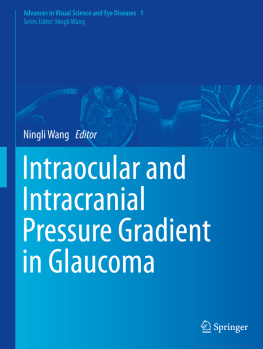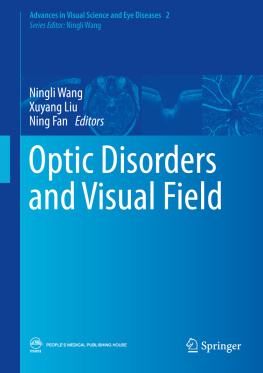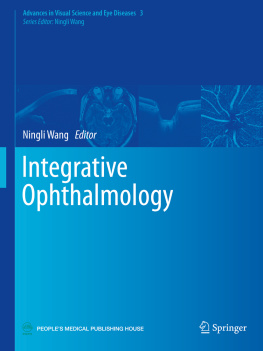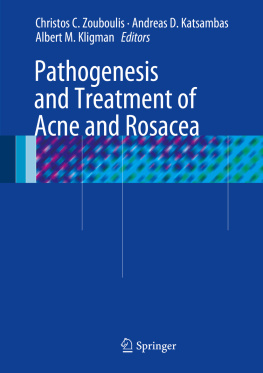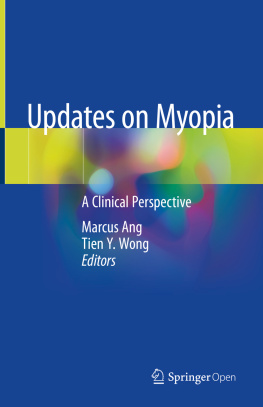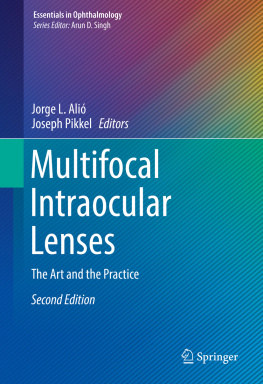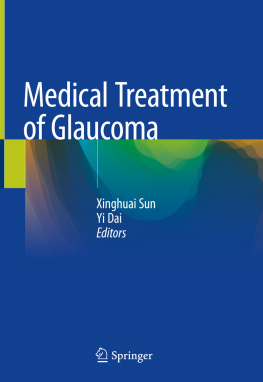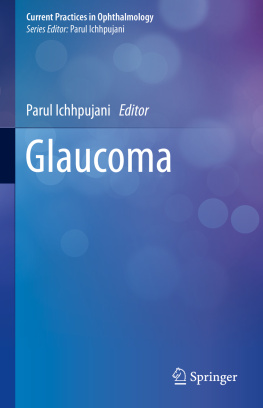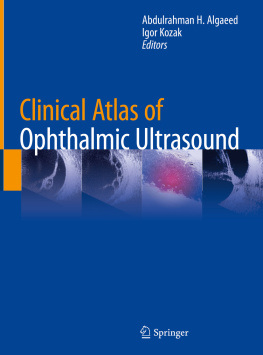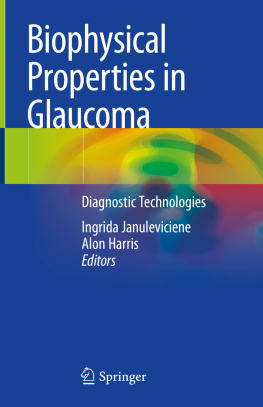Volume 1
Advances in Visual Science and Eye Diseases
Series Editor
Ningli Wang
Beijing Tongren Hospital, Capital Medical University, Beijing, China
Advances in Visual Science and Eye Diseases presents the latest progress and achievement made in visual science and eye diseases for eye care health professionals at different links in the chain of eye care delivery including ophthalmologists, researchers, eye care service providers, health policy makers, and medical students.
The series firstly covers major blinding eye diseases, expounding on their characteristics and the latest development in pathogenesis, up-to-date researches and treatment options of the diseases in detail. Then, the series unfolds the pathogenesis, new diagnosis methods, latest surgery techniques, genetic research, animal modelling studies and translational medicine in glaucoma. Next, the series provides an overall picture on 000. the development of ophthalmology in China along with the contribution of Chinese ophthalmologists to the international community from historical perspective and sheds light on its future development directions; 2. eye epidemiological studies and achievements in blindness prevention in China; 4. holistic view on the systematic relationship between the eye and other organs as well as the relationship between eye diseases and systematic diseases. We hope readers can benefit from this series by enriching their latest knowledge in no matter visual science or clinical management of eye diseases.
Ningli Wang is a professor at Beijing Tongren Hospital affiliated to Capital Medical University, Beijing, China. He is also the director of Tongren Eye Center, Beijing, China.
More information about this series at http://www.springer.com/series/16143
Intraocular and Intracranial Pressure Gradient in Glaucoma
Editor
Ningli Wang
Beijing Tongren Hospital, Capital Medical University, Beijing, China
ISSN 2524-566X e-ISSN 2524-5678
Advances in Visual Science and Eye Diseases
ISBN 978-981-13-2136-8 e-ISBN 978-981-13-2137-5
https://doi.org/10.1007/978-981-13-2137-5
Springer Nature Singapore Pte Ltd. 2019
This work is subject to copyright. All rights are reserved by the Publisher, whether the whole or part of the material is concerned, specifically the rights of translation, reprinting, reuse of illustrations, recitation, broadcasting, reproduction on microfilms or in any other physical way, and transmission or information storage and retrieval, electronic adaptation, computer software, or by similar or dissimilar methodology now known or hereafter developed.
The use of general descriptive names, registered names, trademarks, service marks, etc. in this publication does not imply, even in the absence of a specific statement, that such names are exempt from the relevant protective laws and regulations and therefore free for general use.
The publisher, the authors, and the editors are safe to assume that the advice and information in this book are believed to be true and accurate at the date of publication. Neither the publisher nor the authors or the editors give a warranty, express or implied, with respect to the material contained herein or for any errors or omissions that may have been made. The publisher remains neutral with regard to jurisdictional claims in published maps and institutional affiliations.
This Springer imprint is published by the registered company Springer Nature Singapore Pte Ltd.
The registered company address is: 152 Beach Road, #21-01/04 Gateway East, Singapore 189721, Singapore
Preface
Glaucoma is well recognized as a pressure-related disease. Although many traditional theories have been brought up to explain the mechanism of glaucomatous optic nerve damage, such as mechanical theory and vascular theory, none of them succeeded in revealing the whole truth about the pathogenesis of glaucoma. More importantly, it was noticed in recent years that, in Asia, especially in East Asia, the intraocular pressure (IOP) of 6080% patients with open angle glaucoma (OAG) was within the normal range. Why would the optic nerve damage still occur even when the IOP is within the normal range? This challenging yet significant question has remained unanswered.
In 1976, the effect of low cerebrospinal fluid pressure (CSFP) on glaucoma was, for the first time, discussed by Volkov V.V. In 1979, Yablonski M.E., Ritch R. and Pokorny K.S. found that chronic lowering of intracranial pressure (ICP) led to glaucomatous damage in the optic nerve and put forward the hypothesis that low CSFP might be involved in glaucoma. Yablonski and colleagues lowered the CSFP to 4 mmHg in the cat model. One eye of the cat was cannulated to achieve 0 mmHg of pressure, while the other eye was the control. Three weeks later, the non-cannulated eye developed glaucomatous neuropathy, while the fundus of the eye that was maintained a lower pressure as similar to the CSFP remained normal. This is the first animal model that suggested the role of the intraocular and intracranial pressure gradient in glaucoma. About three decades later, a retrospective study by John Berdahl et al. in 2008 and a prospective study by Beijing iCOP Study Group in 2010 found that 7080% patients with normal tension glaucoma (NTG) had a relatively low ICP, which was the first time that the elevated trans-lamina cribrosa pressure difference (TLPD) caused by low ICP in NTG was identified through a clinical observational study. After this breakthrough, a series of studies based on primate and rat models were carried out worldwide, providing growing evidence that the intraocular and intracranial pressure gradient or TLPD plays an essential role in the mechanism of optic nerve damage in OAG. However, at the same time, a number of studies have also proved that the pressure gradient theory or TLPD theory alone cannot explain the development of all types of glaucoma, and it only serves as a potential pathogenesis for a certain proportion of NTG patients.
In 2016, the Beijing iCOP Study Group organized the first Intraocular and Intracranial Pressure Gradient Related Diseases International Summit (IIPGD Summit) and invited top experts in this field from all over the world to introduce and share their research results. After candid and spirited discussion, all the speakers reached an agreement on publishing a book that covers all the presented research results. The book reviews all the research results in this field from the beginning to the present, summarizes the consensus built, presents different viewpoints and proposes future research directions in the field.
Recently, there were several important articles on this theme published. Linda et al. used a more accurate method to calculate the TLPD and reported that NTG patients have normal ICP. This inconsistency between our research results was caused by difference in small sample sizes in all studies, and racial difference should also be considered, which has inspired us that an international cooperative study covering different ethnic groups based on a standard protocol would be of great interest. In addition, Gallina et al. reported that 9 out of 22 patients with normal pressure hydrocephalus who were treated with ventriculoperitoneal shunt placement to lower the cerebrospinal fluid pressure developed NTG, which provides stronger evidence on the role of CSFP in glaucomatous optic neuropathy. More recently, Sawada et al. observed focal lamina cribrosa (LC) defect in patients with myopia. The results showed that compared with progressive visual field defect group, non-progressive visual field defect group had more eyes with LC defect. Meanwhile, the baseline IOP was lower in eyes with LC defect. These findings suggested that LC defect may have contributed to the pressure balance between IOP and CSFP, resulting in a lower TLPD and thereby protecting LC from mechanical force. Unfortunately, all the manuscripts have already been submitted to the publisher when these articles were published. Therefore, the results of these remarkable researches were not included in this book.

